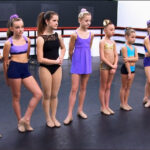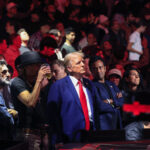Roblox offers a vast playground for creativity, and dancing is a fun way to express yourself and interact with others in the game. While Roblox provides default emotes, you might want to add your own unique dance moves. This guide will walk you through the basics of implementing custom dance animations in Roblox using scripts. Let’s learn how to make your avatar groove to your own beat!
Setting Up Your Dance Script
To get started with custom dances, you’ll need to place a specific type of script in the correct location within your Roblox game. This is crucial for the animations to work properly for all players, not just yourself.
The key is to use a LocalScript and place it under StarterPlayerScripts. This ensures that the script runs on each player’s client, making the dance animations visible to everyone in the game.
Understanding the Animation Script Structure
The script we’ll use relies on tables to organize your dance emotes and their corresponding animation IDs. Think of tables as lists that help the script quickly find and play the right animation when you want to dance.
Here’s how the tables are structured:
animationstable: This table holds the names you’ll use to call your dances in the game. For example, you might name a dance “Salsa” or “HipHop”.animationidstable: This table stores the actual Animation IDs from Roblox for each dance. Each dance name in theanimationstable needs a matching Animation ID in theanimationidstable at the same position.
Important: The order in these tables matters! If “Salsa” is the first entry in the animations table, then the Animation ID for the Salsa dance must be the first entry in the animationids table.
Adding Your Custom Dance Animations
Let’s say you want to add a “Wave” dance to your Roblox game. First, you’ll need to get the Animation ID for a wave dance. You can obtain these IDs from the Roblox Library or by creating your own animations in the Roblox Animation Editor.
Once you have the Animation ID, you can add it to your script like this:
- Open your LocalScript in StarterPlayerScripts.
- Find the
animationstable. - Add the name of your dance (e.g.,
"Wave") as a new entry in theanimationstable. - Find the
animationidstable. - Add the Animation ID for your “Wave” dance as a new entry in the
animationidstable, making sure it’s in the same position as “Wave” in theanimationstable.
local animations = {"Dance1", "Dance2", "Wave"} -- Added "Wave" dance name
local animationids = {"AnimationID1", "AnimationID2", "AnimationID_for_Wave"} -- Added Animation ID for "Wave"The script will then automatically create animation instances and link them to these IDs. You don’t need to manually place animation objects in the workspace. The script handles this for you, making it easy to add and manage your custom dances.
Alternative: Using an Animation Folder (Optional)
For more advanced organization, you could modify the script to load animations from a folder in the workspace instead of directly creating instances in the script. If you prefer this method, you would:
- Create a Folder named “Animations” (or any name you choose) in the Workspace.
- Place Animation objects inside this folder.
- Modify the script to find and use animations from this folder instead of the
animationidstable.
This approach can be helpful if you have a large number of animations and want to manage them visually within the Roblox Studio workspace. However, for beginners, using the table method as described earlier is often simpler to set up.
Important Notes for Animation Implementation
- Table Slot Matching: Always ensure that the dance names in the
animationstable correspond correctly to the Animation IDs in theanimationidstable based on their position in the tables. Mismatched slots will result in incorrect animations playing for the wrong dance names. - Animation IDs: Double-check that you have entered the correct Animation IDs for your desired dances. Incorrect IDs will lead to errors or unexpected animations.
- LocalScript Location: Placing the script in StarterPlayerScripts is essential for the dances to work for all players in the game.
Conclusion: Start Dancing in Roblox!
Adding custom dances to your Roblox game is a fun and rewarding way to enhance player experience and add personality to your creations. By using LocalScripts and organizing your animations with tables, you can easily implement a variety of dance emotes. Experiment with different animations, and let your players express themselves on the dance floor! If you have more questions or need further assistance, don’t hesitate to ask.


